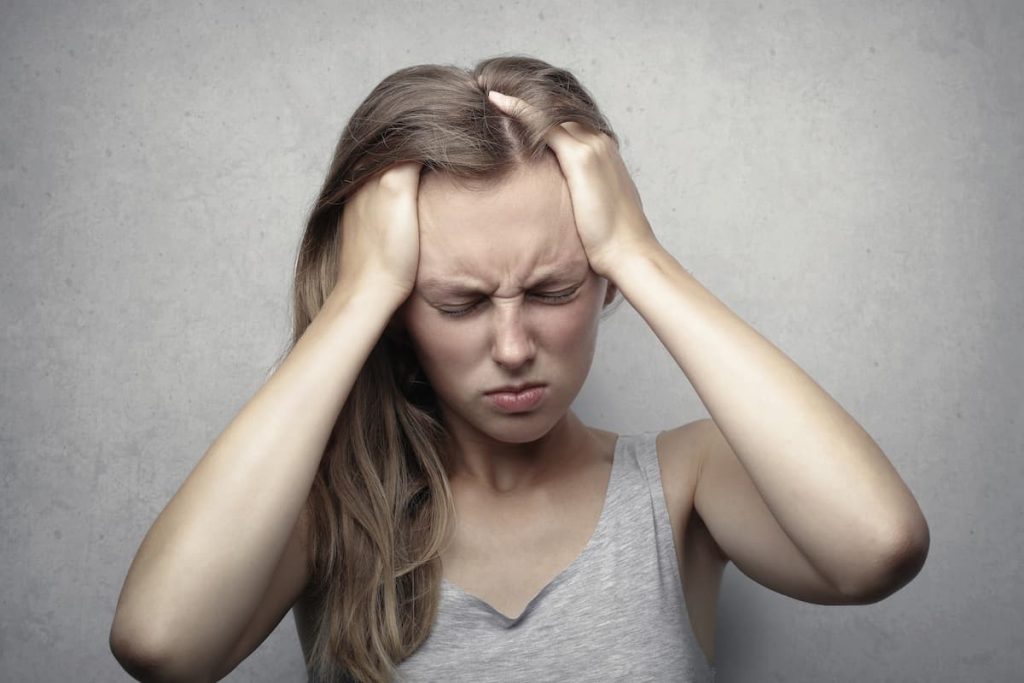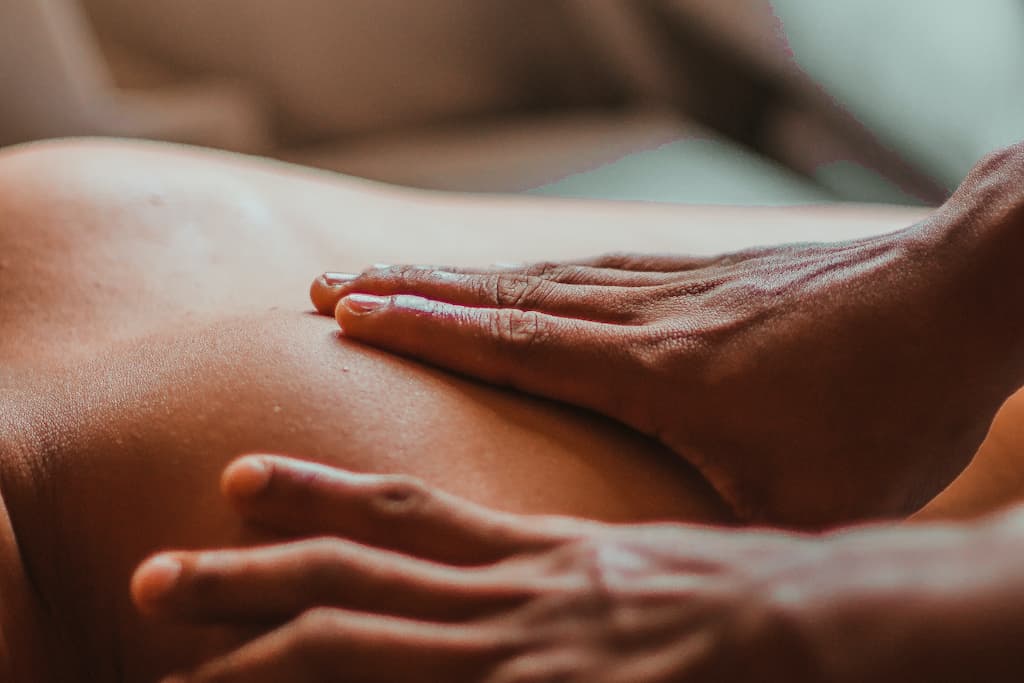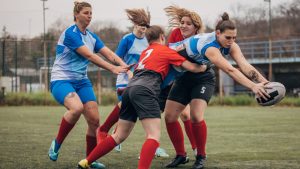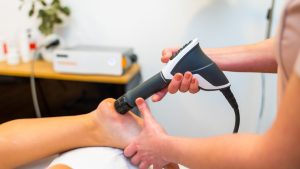
Headaches can be, at best, a discomfort and inconvenience and, at worst, painful, debilitating and even scary. In this guide, we lead you through the different types of headaches. We help you identify when self-help techniques can be used and when you should consult a doctor, and explain how you can prevent and treat headaches with physiotherapy and massage.
As well as showing you how self massage can quickly relieve headaches, we explain how specialist physiotherapy and massage therapy can treat the underlying reasons for your headache, reduce symptoms and speed up your physical recovery.
Is My Headache Serious?
Most of us will experience a headache at some time. The cause and symptoms of these headaches vary quite widely. A headache is not usually considered to be very serious if it is infrequent. Here we help you learn how to stop headaches immediately.
When Do I Need to See a Doctor About My Headache?
Firstly, if you have a sudden head pain that is getting steadily worse despite treatment, or feels different to your usual headache.
Secondly, if you experience a headache combined with either blurred vision, dizziness, speech or swallowing problems, paralysis or weakness in 1 or both arms or 1 side of your face, a high temperature (fever), stiff neck, or you black out or experience seizures, then it’s advisable to see a doctor immediately.
Headaches from strokes (less than 1% of lifetime prevalence of headache) and tumours (0.1%!) reassuringly, are very rare.
How Common Are Headaches?
The World Health Organisation reports that about 75% of adults between 18–65 years old have experienced headaches over the space of a year. With around 30% reporting migraines.
The American Journal of Sports Medicine (2018) also states that:
“Lifelong prevalence of headaches is 96%, with a female predominance. The global active prevalence of tension-type headache is approximately 40% and migraine 10%. Migraine occurs most commonly between the ages of 25 and 55 years and is 3 times more common in females.”

What Does My Headache Mean?
Headaches can be divided into two main categories – primary headaches and secondary headaches. Within those categories there are further subclassifications. It is very important to differentiate which kind you are suffering with as this will determine your treatment options. Physiotherapy can help with a few different types of headaches. Read on to learn how you can tell the difference.
What Are Primary Headaches?
Over 90% of headaches seen by GPs or in hospitalGP’s are primary headaches. Primary headaches are when the headache itself is the main problem, not a symptom, of an underlying disease or condition. They are usually not life-threatening and can respond to medication and changes to lifestyle and diet. The most common are:
1 Tension Headaches (TTH) or Muscle Contraction Headaches
What are the symptoms of Tension Headaches?
TTHs begin at the base of the skull and can spread over the top of the head feeling like a pressure. It affects one side or both sides of the head and works its way into your temples. They are often felt behind the eyes too. TTHs are usually not severe enough to disrupt you doing day to day activities.
Tension headaches usually last 30 mins to a couple of hours but can last days. A feature of this type of headache is you can wake up with one! Massage and/or physiotherapy can definitely help this type of headache.
More details can be found on the NHS Website.
2 Vascular Headaches (e.g. Migraine or ‘Cluster’ Headaches)
What are the symptoms of Migraines?
Migraines usually present as a moderate or severe headache felt as a throbbing pain on one side of the head. Sufferers can also have secondary symptoms such as an increased sensitivity to light or sound, and feeling or being sick. These headaches can last a few hours, but again can last days.
Migraines can usually be treated with medication and sleep or rest in a darkened room. Massage and physiotherapy are a good adjunct to medication for treatment.
More details can be found on the NHS Website.
What are the symptoms of ‘Cluster’ Headaches?
Cluster headaches are thankfully quite rare. Usually present with a sharp excruciating pain in and around one eye. Cluster headaches tend to start suddenly and without warning. With pain so intense it stops you in your tracks. Attacks usually last between 15 minutes and 3 hours, but tend to happen in bouts.

Bouts can be several times a day and can be over days, weeks or even months, before subsiding. Cluster headaches can be treated by the right medication. However, there are other treatment options. For further information, see OUCH. Again, massage and physiotherapy can compliment medication for treatment.
More details can be found on the NHS Website.
3 Other Trigeminal Autonomic Cephalgias
These ‘Other Primary Headaches‘ are things such as Primary Cough Headaches, Primary Exercise Headache, Cold-stimulus Headache and Primary Headache Associated with Sexual Activity, to name a few. There are too many to list, but they are generally self-limiting and have specific causal factors. Massage and Physiotherapy are great adjuncts to treatment.
What Are Secondary Headaches?
Secondary headaches account for the other 10%. These headaches are a symptom of an underlying disease that activates the sensory nerves of the head, resulting in pain. The types and causes of these headaches can be wide. You can see a comprehensive list of possible causes here. The most common things we see in the clinic are as follows.
1 Cervicogenic Headaches
Cervicogenic Headaches (CGH) are chronic headaches that arise from the joints at the top of the spine, where the neck vertebra meets the skull. The main symptoms tend to be pain on one side of the head and face, sometimes into the neck and shoulder, and even sometimes into the arm. Range of movement in the neck is often reduced too.
2 Concussion
It is usually obvious that you may have a concussion as it invariably is proceeded by a trauma to the head and neck. The symptoms are usually temporary. As well as a headache you can also get ringing in the ears, nausea, vomiting, blurry vision, confusion, dizziness, fatigue or drowsiness, loss of memory, forgetfulness, delayed response to questioning and slurred speech, among others.
3 Sinusitis Or Infection Related Headaches
Sinusitis results in pain, tenderness and sometimes swelling around your cheeks, eyes and forehead. You may experience a blocked nose, reduced sense of smell and a high temperature as well as your headache.
Relieving Headaches With Physiotherapy and Massage
With secondary headaches it is important to treat the underlying reason the headache developed. Once treated, as with primary headaches, physiotherapy and massage therapy will help to reduce symptoms.
The history and presentation of symptoms will allow us to recognise the type of headache you are likely to have. More importantly, we will be able to tell you if you need to seek further investigation or not.
During our assessment we ask you questions such as the location, severity, frequency and duration of your headache symptoms. What triggers your headaches. We’ll explore the movements and postures that typically bring on a headache episode.
We will then check you physically.
There are several checks and measures that we use:
- Reduced neck range of movement.
- A neurological screening, including cranial nerves if indicated.
- Assessing the strength and proprioception of your head and neck.
Physiotherapy for Headaches
At Central Health Physiotherapy, we use a combination of techniques. Our highly trained and experienced physiotherapists will help you regain range of motion and return to normal daily activities as soon as possible.
Using manual therapy techniques, alongside a tailored exercise programme, helps to improve the range of movement, proprioception and strength, as indicated, in the neck. The aim is to get you back to your normal activities as soon as you can.
If you are experiencing dizziness, then our Vestibular specialist physio’s can help you with that too!

Massage for Headaches
Here are some questions we often get asked about how we relieve headaches with massage.
Can Massage Get Rid of Headache?
Our expert Massage Therapist Lynsey says:
People attending for a massage, may not initially think to mention that they are experiencing headaches. Instead focusing on the increased upper back, neck and shoulder tension, or a reduction in the normal range of motion they are experiencing. It’s only on further questioning during the session, they may reveal that they have also been experiencing headaches, alongside their other symptoms.
How Does Neck Massage for Headaches and Tension Headache Trigger Point Desensitisation Work?
Lynsey says:
“Often during treatment sessions, I can press on certain tissues that may be more sensitised than normal, especially for migraine sufferers. The sensation felt may replicate a patient’s headache, which indicates that their upper back, neck and shoulder muscle tension is affecting their symptoms.”
Why Does Pressing on the Head Relieve Headaches?
Lynsey says:
“Massage pressure can be modified as needed depending on the patient’s level of skin sensitivity, but the beauty of massage and touch means this sensitivity quickly subsides. Resulting in a reduction in pain, an increase in range of movement, and either resolving, or certainly reducing headache intensity, alongside improving the patient’s other presenting symptoms.”
What can I do to help prevent headaches?
- Maintain a good sitting posture.
- Avoid prolonged periods of sitting or static postures in general.
- Ask your employer about having an appropriate workstation assessment – Central Health can help with this.
- Keep yourself well hydrated throughout the day.
- Exercise regularly – this helps maintain good posture and increase blood circulation.
How to Relieve Headaches With Self Massage
Sign up to download our free pdf headaches selfcare advice sheet




